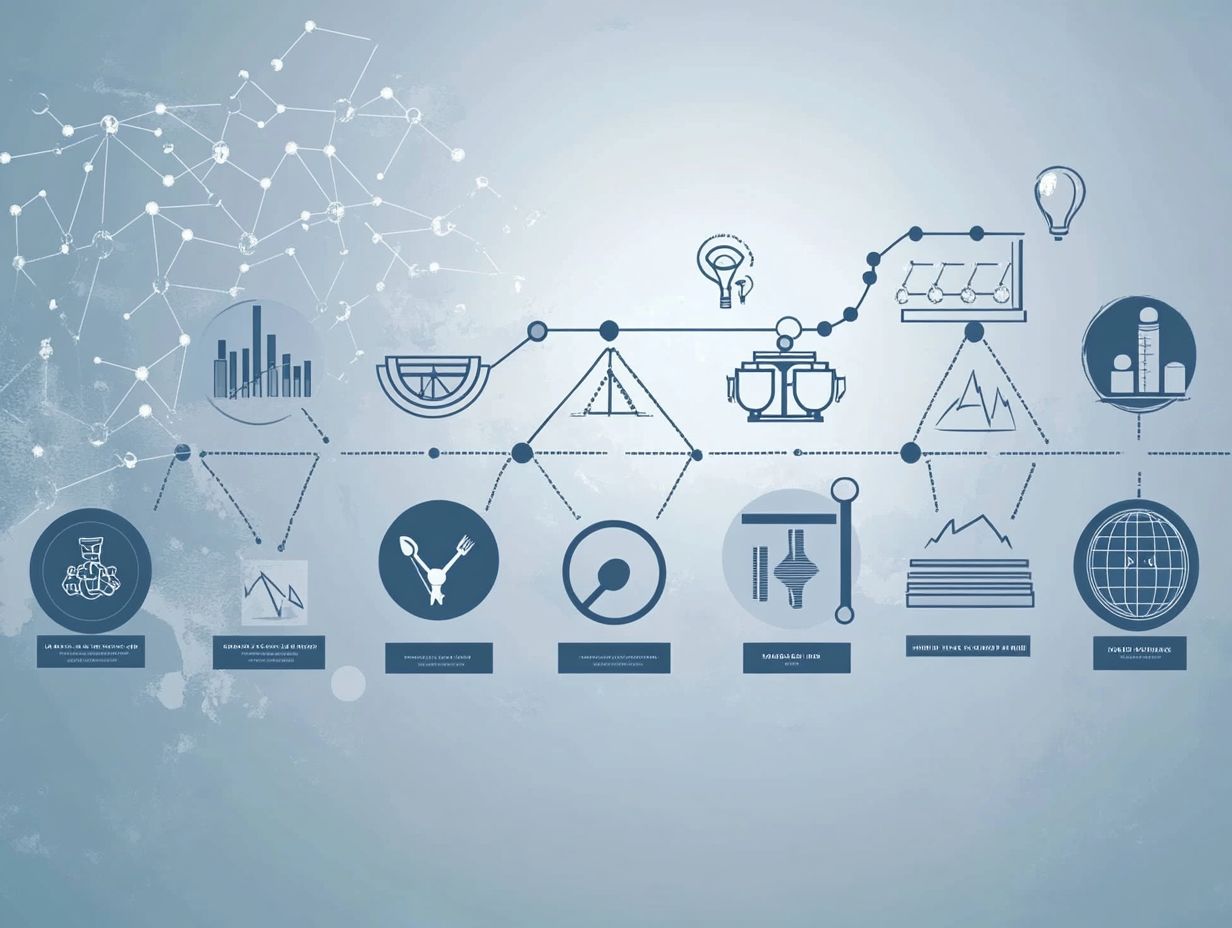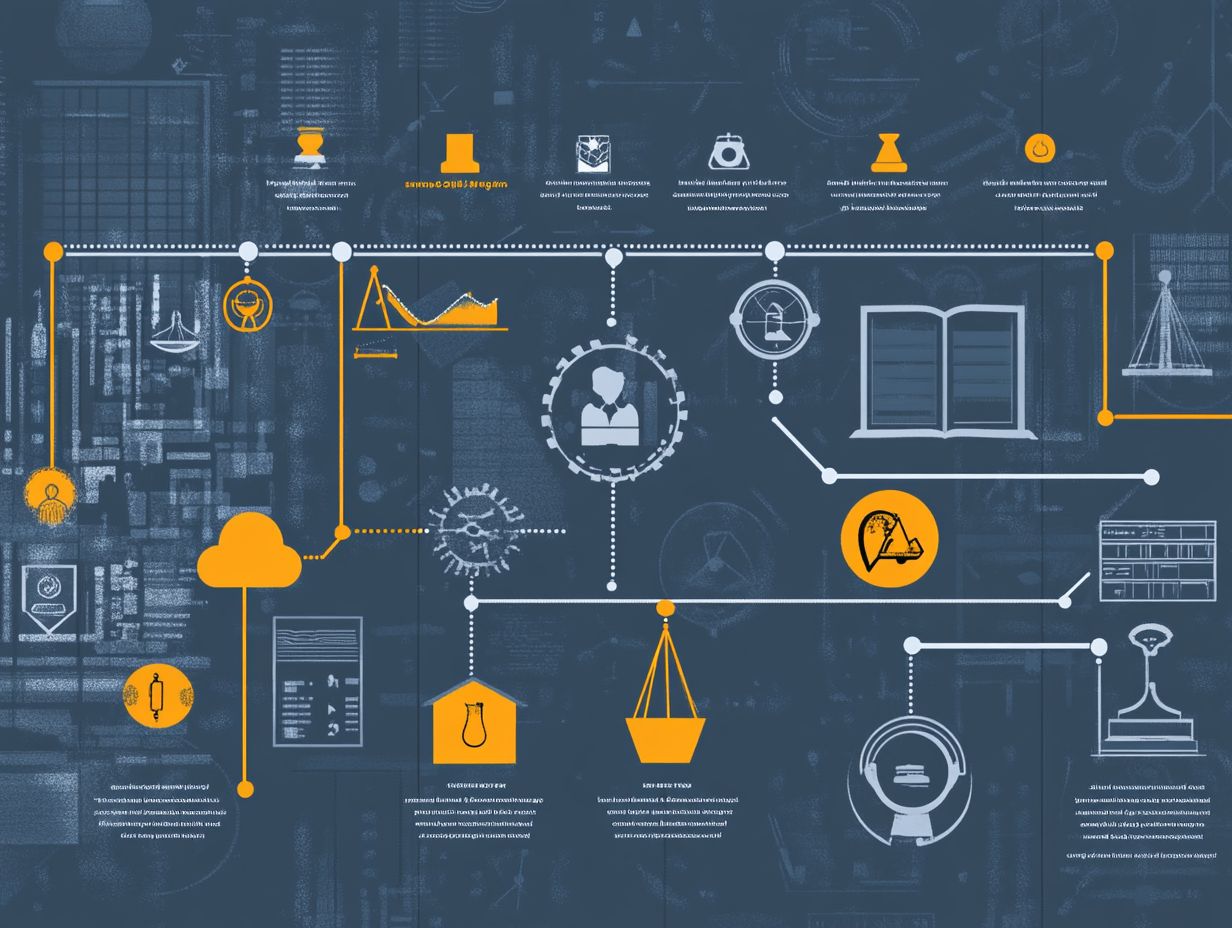The Evolution of Patent Law Over the Last Decade
Patent law is a dynamic realm that continually adapts to the challenges and innovations of our era. This overview offers a clear definition of patent law and its fundamental purpose.
You ll explore significant changes from the past decade, emphasizing key reforms and landmark court cases that have shaped the landscape.
A comparison of international approaches will provide insight, while ongoing challenges and controversies will spark engaging debates among stakeholders.
Join us as we unravel these crucial aspects of patent law and their profound impact on the industry.
Contents
- Key Takeaways:
- Overview of Patent Law
- Changes in Patent Law in the Last Decade
- Influential Court Cases
- International Developments in Patent Law
- Challenges and Controversies in Patent Law
- Frequently Asked Questions
- The Evolution of Patent Law
- 1. What is the purpose of patent law?
- 2. How has patent law evolved over the last decade?
- 3. What impact has technology had on patent law in the last decade?
- 4. How have court decisions affected patent law in recent years?
- 5. How have changes in patent law affected different industries?
- 6. What can we expect from patent law in the future?
Key Takeaways:

- Patent law has undergone significant changes in the last decade, with key reforms and amendments implemented to adapt to the evolving technological landscape.
- Influential court cases have reshaped patent law and the industry, changing how patents are protected and enforced.
- International developments in patent law have revealed varying approaches and challenges faced by different countries, leading to ongoing debates and controversies in the field.
Overview of Patent Law
The landscape of patent law in the United States presents a sophisticated framework aimed at nurturing innovation while safeguarding intellectual property.
Since the first patent was granted under the Patent Act of 1790, the U.S. patent system has evolved remarkably, influenced by figures like George Washington and Thomas Jefferson. Their advocacy for rewarding inventors for their societal contributions laid the groundwork for a legal structure essential to inventors’ rights and the promotion of technological advancement.
Understanding patent law helps you navigate the realm of creations of the mind, like inventions and designs, with confidence and insight.
Definition and Purpose
Patent law is a vital cornerstone in the expansive realm of intellectual property, providing the legal framework that recognizes and safeguards your inventions and innovations.
By granting you exclusive rights for a defined period, this legal structure incentivizes creativity and encourages investment in research and development.
To qualify for patent protection, your inventions must meet specific criteria, including novelty, not obvious to someone skilled in the field, and utility, ensuring that only genuine innovations receive this prestigious recognition.
Patent laws are essential in advancing various industries, particularly in life sciences and technology, where your breakthroughs could lead to life-saving treatments or transformative digital solutions.
By protecting your rights as an inventor, patent law cultivates a competitive market and drives substantial contributions to society through technological progress.
Changes in Patent Law in the Last Decade
Over the past decade, you may have noticed that patent law in the United States has undergone significant transformations designed to enhance the efficiency and effectiveness of the patent system, paralleling changes in the evolution of trademark law over the years.
A key milestone in this evolution is the enactment of the America Invents Act, which introduced substantial reforms to patent examinations and litigation processes. This legislation has reshaped how patents are handled, reflecting a proactive approach to innovation and intellectual property management.
Key Reforms and Amendments

Key reforms and amendments in patent law, particularly the America Invents Act, have transformed the landscape for patent applications and examinations, introducing measures that enhance patent quality and streamline processes.
These changes led to the establishment of the Patent Trial and Appeal Board, a new body dedicated to resolving disputes over patent validity, effectively redistributing some responsibilities from traditional judicial systems.
The act introduced provisions for post-grant review, allowing challenges to be lodged against patents soon after their issuance, intensifying scrutiny to ensure that only truly innovative ideas receive protection.
Patent examiners at the U.S. Patent and Trademark Office now face new pressures and opportunities, encouraging them to refine their evaluation skills and focus on delivering higher-quality patents.
This shift not only aims to bolster innovation but also fosters a more reliable patent environment, vital for nurturing advancements across various industries.
Influential Court Cases
Influential court cases, especially those from the Supreme Court, have greatly shaped patent law. Landmark rulings, such as the Alice Corp. v. CLS Bank International case, have redefined patent eligibility and examination standards in the United States, marking pivotal moments in the legal landscape.
Impact on Patent Law and Industry
The impact of influential court cases on patent law resonates throughout various industries, shaping your patent strategies and influencing the quality and robustness of the patent portfolios you hold within the innovation and technology sectors.
These legal precedents encourage you to take more proactive approaches, sharpening your focus on meticulously crafting patent applications while enhancing your defenses against infringement claims.
As you navigate these evolving landscapes, you face increased pressure not only to secure high-quality patents but also to maintain them. They become essential for sustaining competitive advantages.
This is particularly true in the high-tech and life sciences industries, where rapid advancements require a continuous cycle of innovation.
These rulings create a culture that values the quality of patents over quantity, fostering an environment where breakthrough innovations can thrive despite the ever-present threat of litigation.
International Developments in Patent Law
International developments in patent law have ushered in notable shifts in the global approach to patent protection.
Systems like the Unitary Patent and treaties like the Paris Convention help improve cooperation among patent offices worldwide, creating a more cohesive and streamlined landscape for intellectual property management.
Comparing Different Countries’ Approaches

Comparing the various approaches to patent law across countries reveals a tapestry of patent systems, each boasting its own distinct criteria for patent eligibility, examination processes, and enforcement mechanisms.
These differences can profoundly impact the effectiveness of international patent protection for both inventors and businesses.
For example, the United States adopts a more applicant-friendly system, favoring a first-to-file model, whereas many European nations enforce a rigorous examination process that can span several years. Such disparities create a complex landscape where strategies must be meticulously tailored to each market.
Countries like Japan exemplify successful patent strategies with their efficient examination timelines and robust enforcement, providing strong protection for their technological advancements.
Simultaneously, patent offices around the world play a pivotal role in overseeing these systems, ensuring compliance with local laws while fostering international collaborations.
Challenges and Controversies in Patent Law
In the intricate world of patent law, you’ll face many exciting challenges and controversies, particularly regarding entities that exploit patent laws for profit, often referred to as patent trolls.
These entities complicate patent litigation and introduce additional costs that can burden businesses as they traverse the complexities of the patent system.
Debates and Issues Surrounding Patent Law
Debates surrounding patent law often revolve around the delicate balance between protecting innovators and preventing abuses within the system, particularly the troubling rise of patent trolls that capitalize on the intricacies of patent litigation.
This ongoing struggle sparks a broader conversation about how to harmonize the interests of inventors who wish to safeguard their intellectual property with the needs of the public and businesses that thrive on fair competition.
Stakeholders in this discourse include individual inventors, large corporations, and consumers, each bringing unique perspectives on the effectiveness of current laws.
Recent discussions have shifted towards potential reforms aimed at streamlining the patent application process while curbing the aggressive tactics employed by non-practicing entities.
Strategies under consideration may involve implementing stricter screening processes for patent applications or enhancing transparency in the litigation process.
The ultimate goal is to cultivate an environment where innovation can thrive, ensuring equitable practices for everyone involved.
Frequently Asked Questions
In this section, we address common concerns about patent law, helping you stay informed and proactive about your patent strategies.
The Evolution of Patent Law
1. What is the purpose of patent law?

Patent law protects inventors’ rights and promotes innovation by granting them exclusive rights to their inventions for a limited time. This allows inventors to profit from their creations and motivates them to develop new ideas and technologies.
2. How has patent law evolved over the last decade?
Over the last decade, patent law has changed a lot. One major development is the shift towards a more globalized system, with international patent treaties and agreements. Additionally, there have been stricter requirements for obtaining patents, especially for software and business method patents.
3. What impact has technology had on patent law in the last decade?
Technology significantly impacts patent law. With the rise of digital innovations, there is a growing need for patent laws to cover issues like software and business method patents. Patent disputes have also increased with new technologies like artificial intelligence and blockchain.
4. How have court decisions affected patent law in recent years?
Court decisions, especially from the Supreme Court of the United States, have greatly influenced patent law. These rulings have clarified important principles, such as criteria for patent eligibility and patent protection scope. They have also tackled controversial topics like patent trolls entities that enforce patent rights without producing products and issues in the pharmaceutical industry.
5. How have changes in patent law affected different industries?
Changes in patent law have impacted various industries differently. Stricter software patent requirements have affected the technology sector, while shifts in patent eligibility rules have significantly influenced the biotech and pharmaceutical industries. Other sectors, such as manufacturing and design, have also felt the effects of these changes.
6. What can we expect from patent law in the future?
The evolution of patent law is ongoing, and we can look forward to more exciting changes ahead! With rapid technological advancements, patent laws will continue to adapt and address new challenges. Additionally, there may be a push towards harmonizing and standardizing patent laws globally.
Stay informed about the latest changes in patent law, and if you need assistance with patents, consider seeking professional advice!






